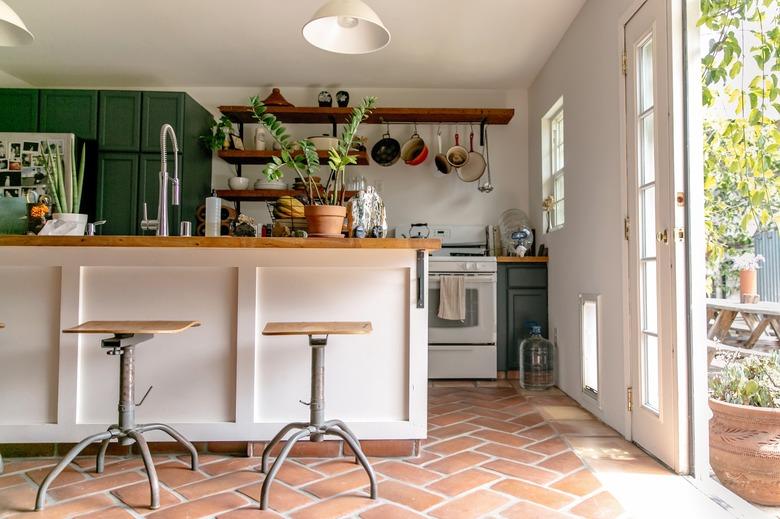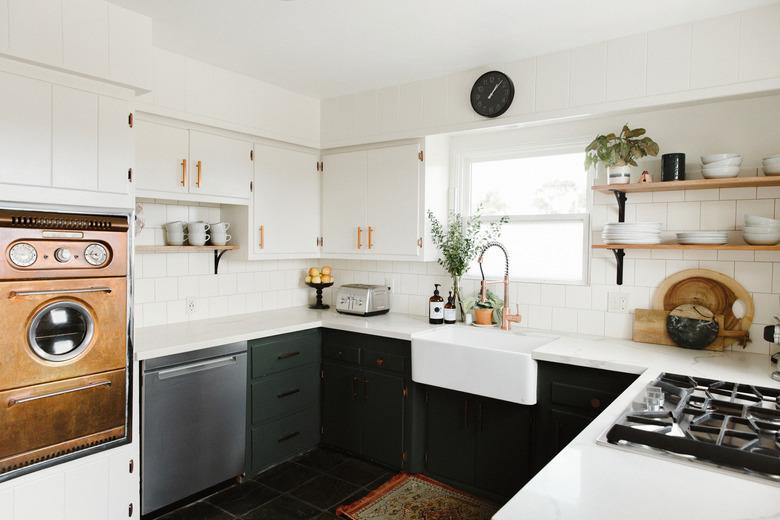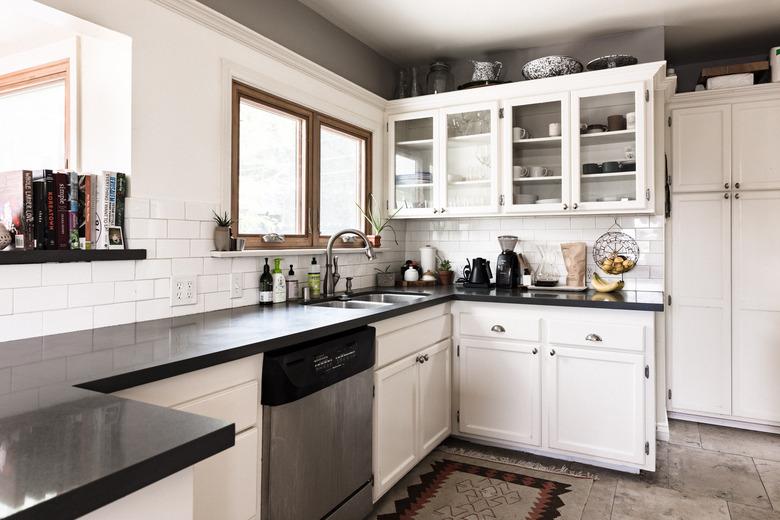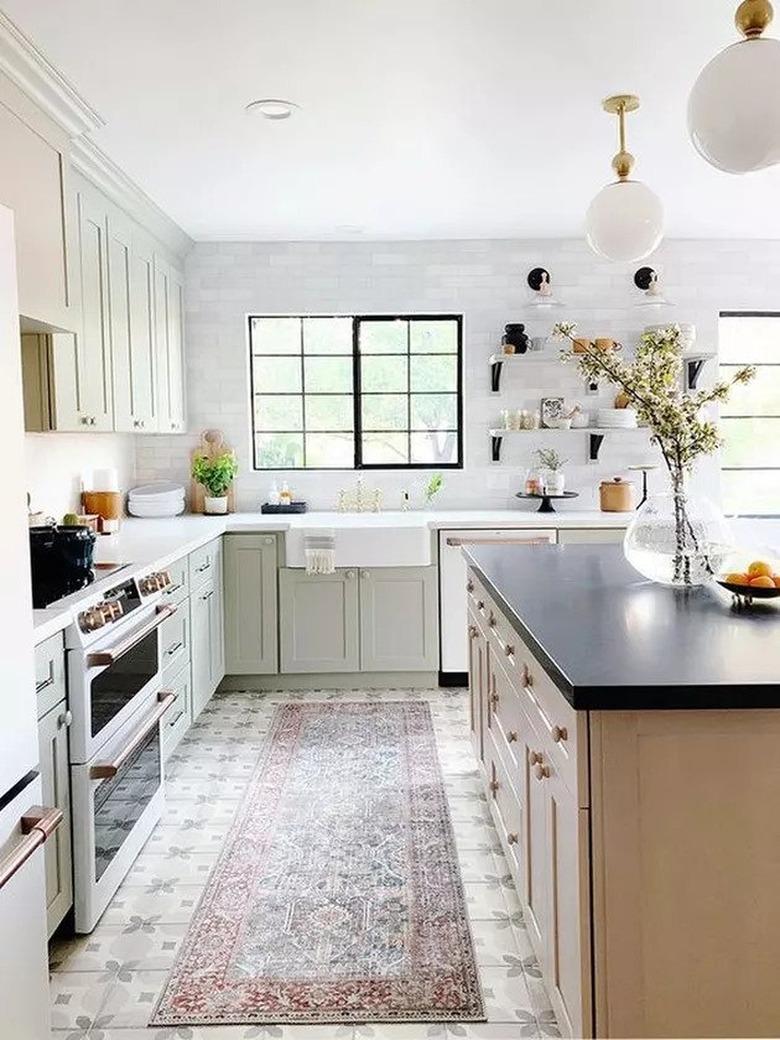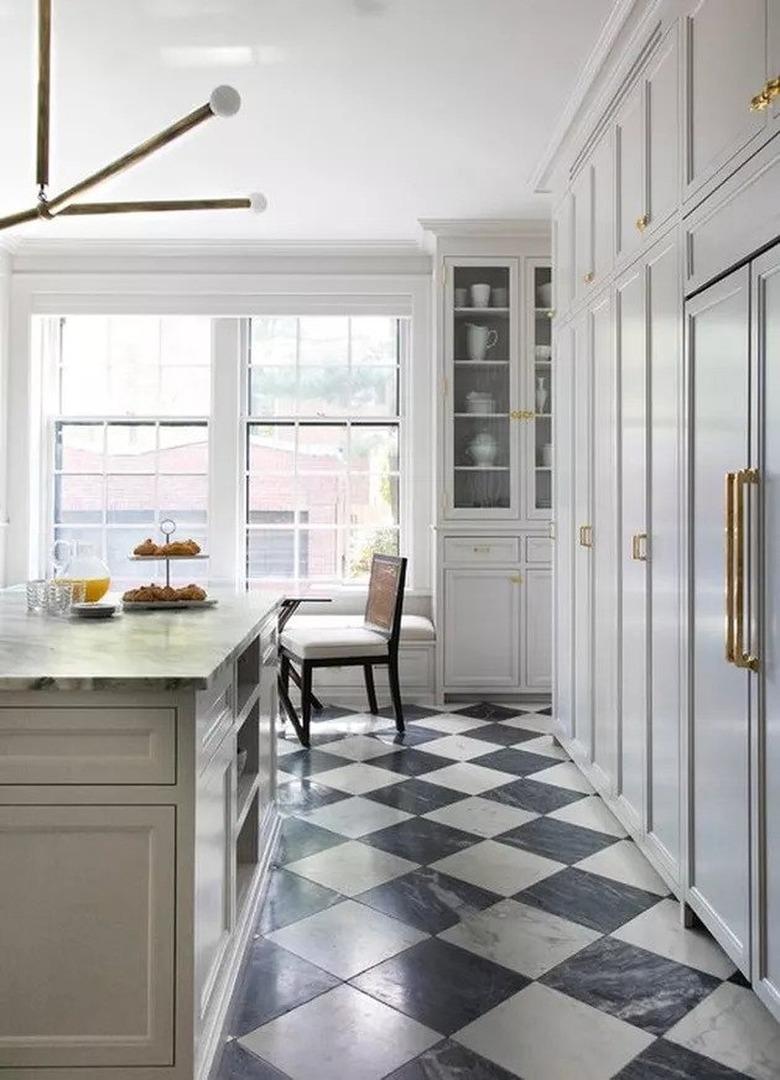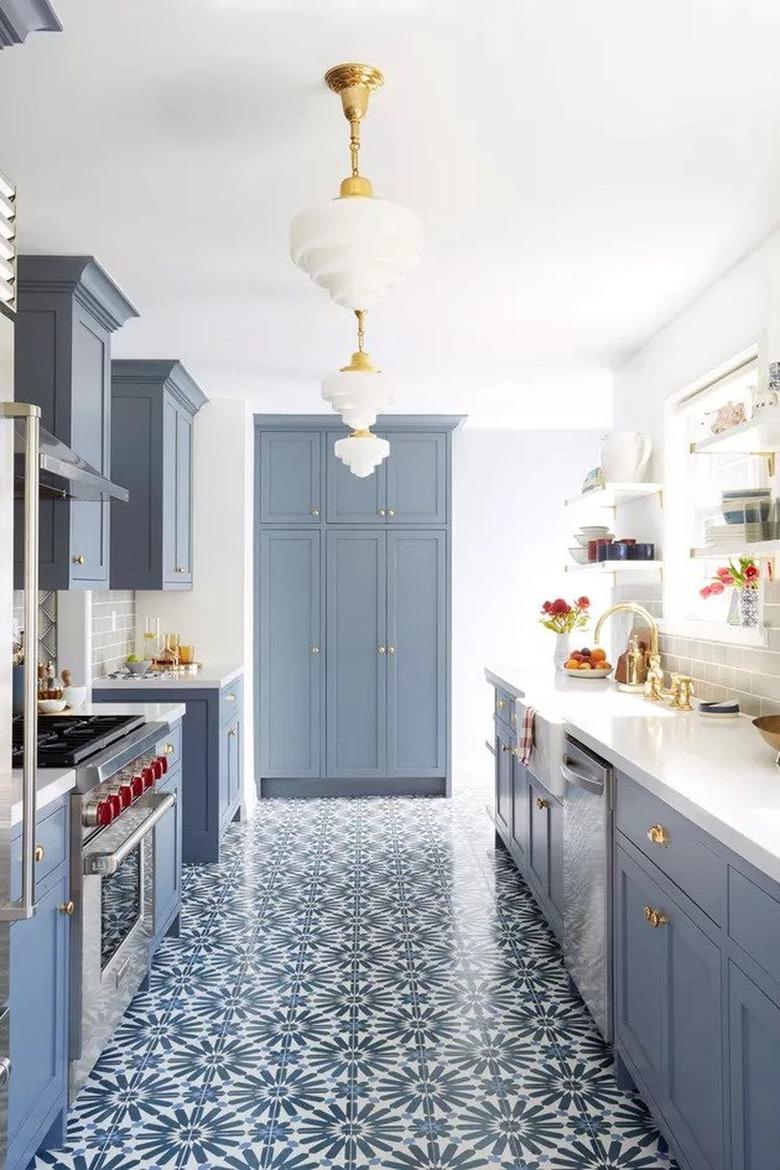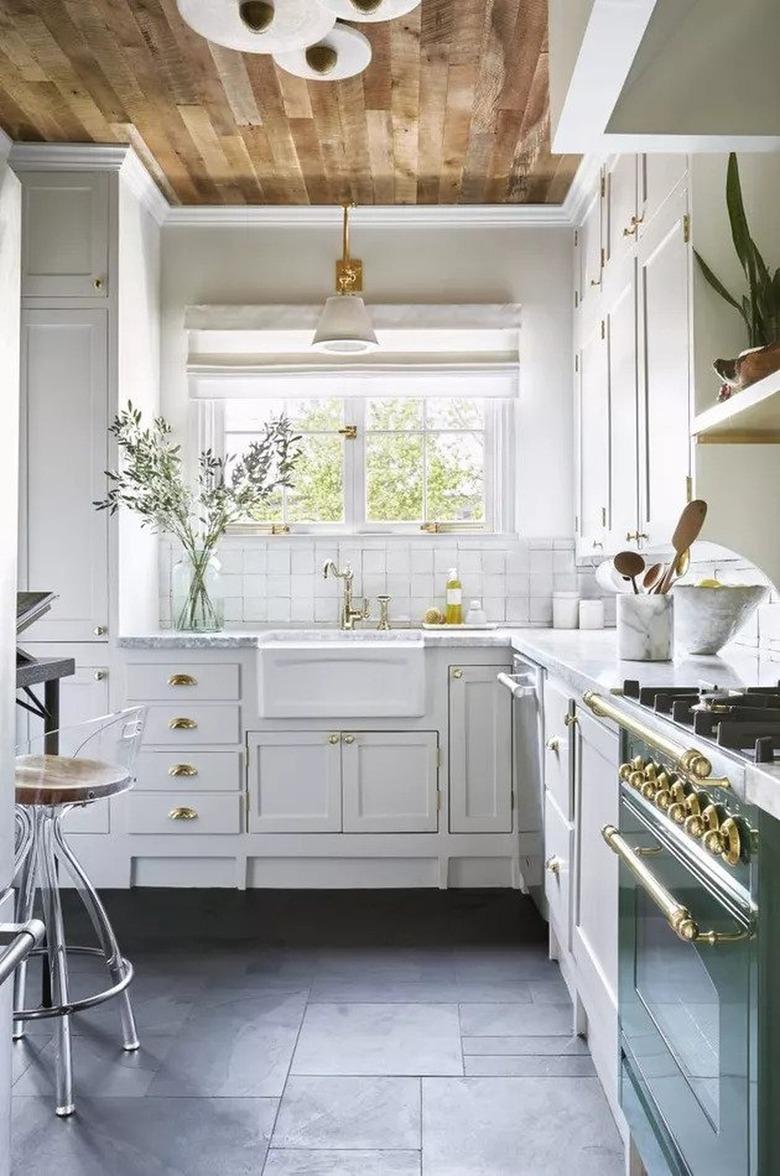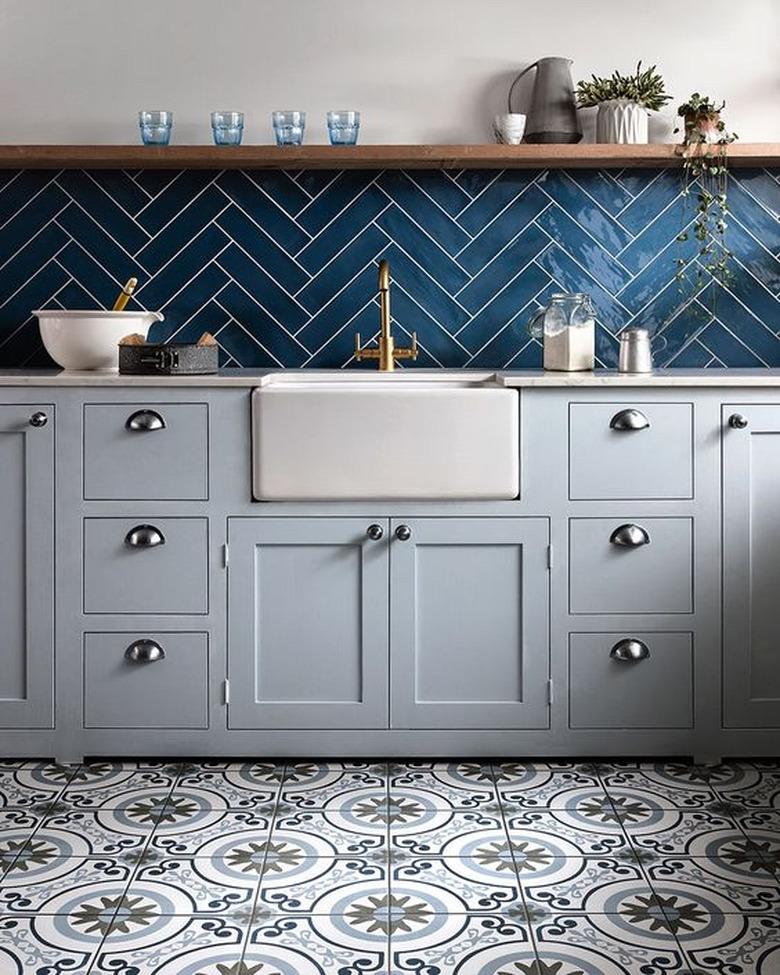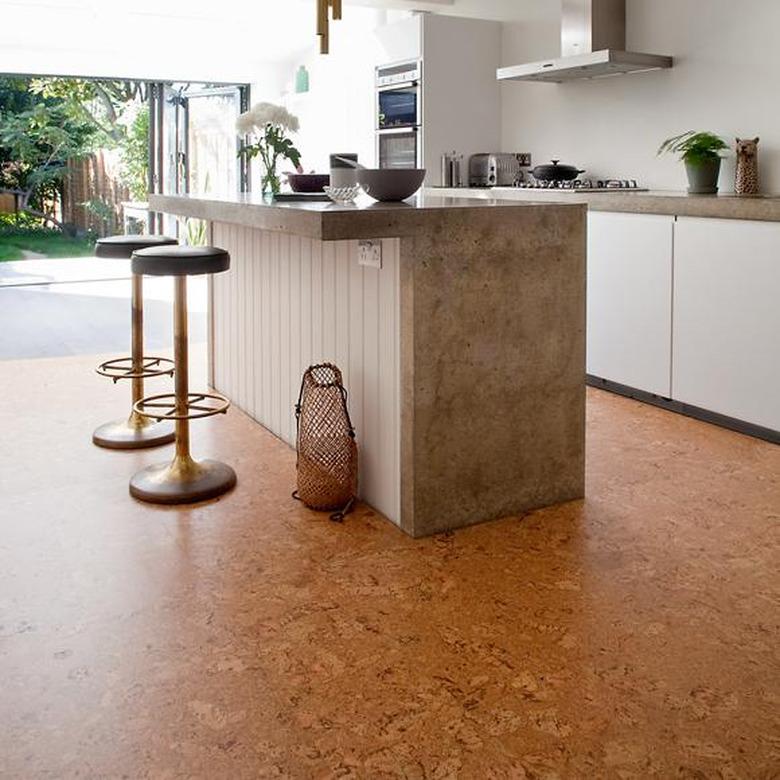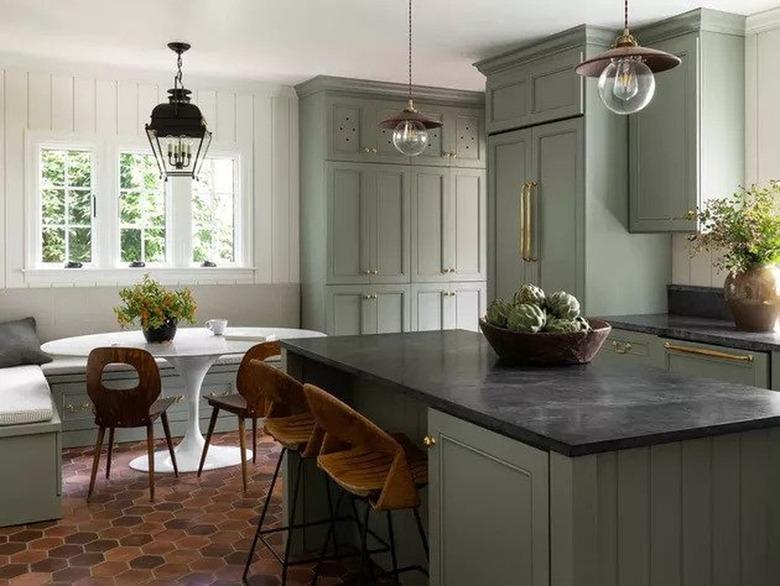Kitchen Floor Tiles: Choosing The Right Material
When remodeling a cook space, it's easy to focus on the super-visible parts: your funky kitchen backsplash tile, the oh-so-Instagrammable Smeg fridge you just had to have, or the chef-worthy six-burner range you pinched pennies for. But don't forget to pay attention to what lies beneath your feet — the flooring. It has the ability to tie a culinary design together, making your space feel like the ultimate masterpiece.
However, the bevy of floor tile designs available can be a tad bit overwhelming. Beyond selecting that perfect color or pattern, you also have to think about which material will give you the look and functionality you want. For instance, slate might be lovely, but are you willing to reseal it every three years? If your feet need a little extra support while meal prepping, perhaps an alternative material like cork flooring deserves some consideration.
To get you off and running, here's a practical guide chock-full of helpful tidbits to aid in your kitchen floor tile decision-making process.
Kitchen Floor Tile Options
Don't let all of the kitchen floor tile options overwhelm you. The first step is to eliminate the materials that don't fit your kitchen, budget, or style.
Tiles can be categorized into three main types: porcelain tile, ceramic tile, and natural stone tile. When deciding between them, you'll want to consider what existing materials the floor needs to coordinate with. For example, do you have a marble countertop and backsplash? If so, you'll likely want the flooring to complement the look.
When choosing a material, it's also important to consider the Porcelain Enamel Institute's (PEI) tile rating based on the hardiness of its glaze. (This does not just apply to porcelain floors.) The score ranges from group one to group five, with the former representing materials that are suitable for wall tile and no foot traffic. The latter is for heavy to extra-high traffic. Group three tiles are generally durable enough for the wear and tear of most kitchen floors.
Shape, Size, and Finish for Kitchen Floor Tiles
Once you've picked the material you want and determined the PEI level necessary for your remodel, you can start on the interior design aspect. Do you prefer a hexagon shape? Or perhaps a mosaic tile design idea? Check out inspiration photos — maybe start here — to determine what most often catches your eye and matches the style of your cook space.
Next, select the size. Tiles range widely, from 3 x 3 inches to 24 x 24 inches. If you have a compact kitchen, choose smaller or elongated tiles to create the illusion of more floor space; otherwise, the room may look disproportionate. The most popular tile size is 12 x 12 inches, according to the experts at popular tiling and building equipment brand Rubi Tools.
For the finish, you'll be able to choose between glazed, glossy, matte, or polished. Naturally, there are pros and cons to all of them. If you're considering a gloss finish, you may love how easy the smooth surface is to clean, but beware that it tends to get slippery when wet. This is something to consider if children, pets, or seniors are often in your kitchen. While a matte finish is slip-resistant and good at concealing dirt, it's harder to clean and can look dull.
Porcelain Kitchen Floor Tile
If you're looking for a slight upgrade from basic ceramic and don't mind paying a small premium, porcelain kitchen floor tile might be the best choice for you. Like ceramic, this material is made from clay, only it's slightly denser, making it a lot better at resisting water intrusions. This durable tile comes in a wide variety of colors, styles, and patterns, like the neutral option seen in this kitchen by Jenny Komenda from Juniper Home.
But it's not all good news: Porcelain tile is a little trickier to cut and install, so make sure you call in a pro.
Cost range: $3 to $35 per square foot
Marble Kitchen Floor Tile
Dreaming of this luxurious and elegant kitchen tile look? Consider high-quality marble — but be prepared to pay a hefty cost. Marble floor tile can cost between $9 and $20 per square foot. But this glam option may be worth spending a few extra coins: Just look at this transitional cook space designed by Sarah Winchester. A black and white harlequin pattern feels deliciously luxe.
Because marble comes from the earth, every tile (and kitchen) will be unique. But there are downsides to this gorgeous choice: It's brittle and can be easily scratched, so don't make a habit of dropping heavy pots, sharp knives, or anything, really. Water and acidic solutions can stain your floors, but sealing the marble will extend the look and life of the tile, helping to prevent some of these issues.
Cost range: $9 to $20 per square foot
Cement Kitchen Floor Tile
Cement kitchen floor tile is oh-so-trendy, and it's easy to see why: Bold bursts of color can easily jazz up an otherwise monotone food zone. See design maven Emily Henderson's sky-blue cook space for an easy example of how cement floor tile can transform a room.
This colorful type of tile is eco-friendly and grippy — so you won't slip even if you spill an entire pitcher of water. (Just make sure to wipe away liquid quickly otherwise it could stain.) And when you do clean cement tile flooring, go for a mild cleaning solution to keep it looking pristine. As for maintenance, cement tile works much like slate: You'll need to reseal every three years.
Cost range: $7 to $14 per square foot
Slate Kitchen Floor Tile
This rustic floor tile option gives your kitchen dramatic appeal. Pair it with white cabinets to keep the space airy — or consider going totally dark. While slate tiles are slightly more expensive than ceramic or porcelain, they are significantly cheaper than marble. You'll spend between $4 and $10 per square foot for the tiles themselves.
Slate is extremely durable and incredibly unique, but maintenance often includes regular sealing. Make sure you're prepared before taking the plunge. And keep in mind that some tiles have an irregular, or "cleft," texture that can be uncomfortable if you're regularly walking around barefoot or in socks.
Cost range: $4 to $10 per square foot
Ceramic Kitchen Floor Tile
This classic choice for kitchen floor tile goes far beyond dated, builder-grade beige. In fact, ceramic tile comes in a variety of styles and colors, including gorgeous geometric patterns that mimic more expensive concrete tile options.
You'll have no trouble keeping your kitchen flooring clean since this option is dent- and scratch-resistant. No fancy cleaning required. All you'll need is a mop. But just like any stone tile, it can be hard to walk on for extended periods. Make sure to add a plush rug in front of your sink to give your feet a rest.
Cost range: $0.50 to $7 per square foot
Cork Kitchen Floor Tile
Now that plywood and bare pine wood floors are trending, it's no surprise that another natural material is shooting through the popularity stratosphere: cork. This affordable option will run you between $3 and $7 per square foot — and, along with the inexpensive cost, the unique kitchen floor material comes with a lot of benefits.
First, it's soft, making dinner prep easier on your feet. Plus, it's durable and not just when it comes to cracks or scratches — the material also resists mold and mildew. However, while cork flooring does come in a variety of styles and colors, some prefer the classic look of stone tile. And that's okay! Choose the type of kitchen floor tile that best suits you and your culinary space.
Cost range: $3 to $7 per square foot
Cost of Tile Installation
In addition to the cost of the tile itself, you'll want to consider how much installation is going to run you. (Unless you're a master DIY-er, in which case, good for you!) On average, according to Home Serve, you can expect to pay between $1,000 to $2,000 for a standard kitchen, and upwards of $2,700 for a large space. The more difficult the project, the more expensive the installation cost.
